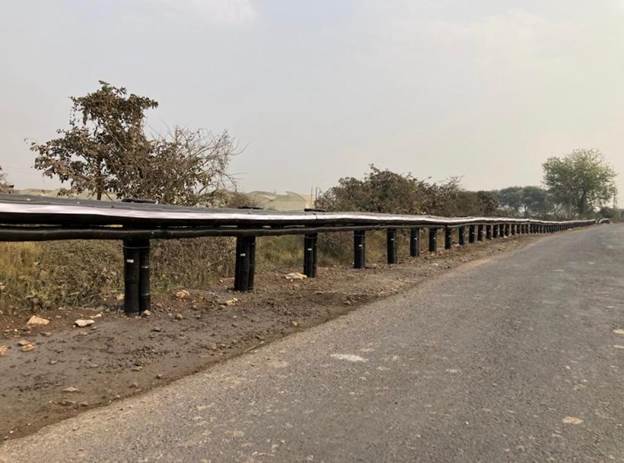Test 30 (ART & CULTURE)
7 March 2023

07-03-2023
12:00:AM
3698 Views
Table of Contents
|
Unused funds, unsuitable land: The problems with Compensatory Afforestation in India
GS-3:Conservation, environmental pollution and degradation, environmental impact assessment.
India aims to increase its forest and tree cover to absorb an additional 2.5-3 billion tonnes of carbon dioxide equivalent by 2030 as part of its international climate change commitments.
This target is difficult to achieve due to rapid industrial and infrastructure development, resulting in the clearance of 1,611 sq km of forest land in the last decade. Despite this, government data shows an increase in total forest cover by 1,540 sq km between 2019 and 2021.
To achieve the target, various tree plantation, afforestation, and reforestation programmes are being implemented, including the Green India Mission and national afforestation programme. Other government programmes, such asNational Rural Employment Guarantee Act(MGNREGA) and NamamiGange, also have significant afforestation components.

What is Compensatory Afforestation?
- Compensatory afforestation is a programme in India that mandates afforestation efforts on at least an equal area of land for forest land that is diverted for non-forest purposes, such as industrial or infrastructure development.
- Project developers, both public and private, are required to fund the afforestation activity on these new lands.
- However, newly afforested land cannot immediately provide the same range of goods and services that fully grown forests provide. Thus, project developers are also required to pay for the Net Present Value (NPV) of the cleared forests, based on an expert committee's calculation.
- The Compensatory Afforestation Fund Act, 2016made this a legal requirement.
The Compensatory Afforestation Fund Act, 2016

- In 2016, the CAF Act was passed by the central government, and its related regulations were notified in 2018.
- This act was created to regulate the funds collected for compensatory afforestation, which were previously managed by the ad hoc Compensatory Afforestation Fund Management and Planning Authority (CAMPA).
- The act aims to establish National and State CAMPAto oversee the funds.
- Its goal is to establish a National Compensatory Afforestation Fund and a State Compensatory Afforestation Fund under the Public Account of India and each state, respectively.
- These Funds will receive payments for
- Compensatory afforestation,
- Net present value of forest (NPV), and
- Other project specific payments.
- As per the provision of the Act, any company that diverts forest land must offer alternative land for compensatory afforestation.
- The company is required to pay for planting new trees on the alternative land provided to the state.
- An expert committeeappointed by the central government will be responsible for determining the ecological cost of forests, known as the Net Present Value (NPV).
- The regulations stipulate that 90% of the CAF funds will be given to the states, while the remaining 10% will be retained by the central government.
- These funds can be used for a variety of purposes, including the treatment of catchment areas, natural generation, forest management, wildlife protection and management, relocation of villages from protected areas, human-wildlife conflict management, training and awareness generation, the supply of wood-saving devices, and other related activities.
Compensatory Afforestation Fund Management and Planning Authority (CAMPA)
- Discrepancies in compensatory afforestation implementation led NGOs to approach the Supreme Court for relief.
- On 10thJuly 2009, the Supreme Court ordered the creation of a National Advisory Council called the CAMPA to oversee and evaluate compensatory afforestation activities, with the Union Minister of Environment & Forests as the chairperson.
- Aim:
- To promote afforestation and regeneration activities as a way of compensating for forest land diverted to non-forest uses.
- Mandate
- Lay down broad guidelines for State CAMPA.
- Facilitate scientific, technological and other assistance that may be required by State CAMPA.
- Make recommendations to State CAMPA based on a review of their plans and programmes.
- Provide a mechanism to State CAMPA to resolve issues of an inter-state or Centre-State character.
Criticism of CAMPA
- Unused funds: The CAMPA has collected a significant amount of funds, but a large portion of it remains unused due to various reasons such as lack of planning and coordination between different departments.
- Misuse of funds:Accusations of the misappropriation or diversion of these funds have also arisen.
- Unsuitable land: There have been instances where compensatory afforestation has been carried out on land that is unsuitable for afforestation, leading to a low survival rate of the planted trees.
- Inadequate monitoring: The lack of proper monitoring of compensatory afforestation activities has resulted in poor quality plantation, and in some cases, the planted trees have been cut down for commercial purposes.
- Disregard for local communities: In many cases, compensatory afforestation activities have been carried out without the involvement of local communities, leading to conflicts and resistance from them.
- Greenwashing:The actView the clearance of forests as legitimate and consider it as an instance of "greenwashing."
- Ecological impact: Compensatory afforestation activities have been criticized for focusing only on the number of trees planted (Monoculture) and not taking into account the ecological impact of the plantation on the surrounding biodiversity.
Fact File
World's first 200-meter-long Bamboo Crash Barrier “Bahu Balli” installed on the Vani-Warora Highway, Vidarbh, Maharashtra
|












Comments
Login To Comment
Recent Comments